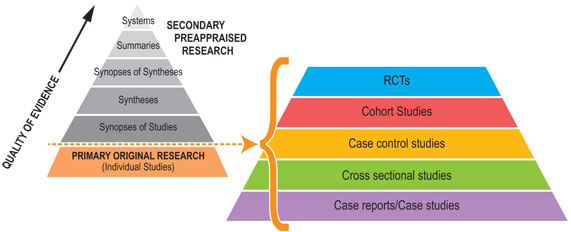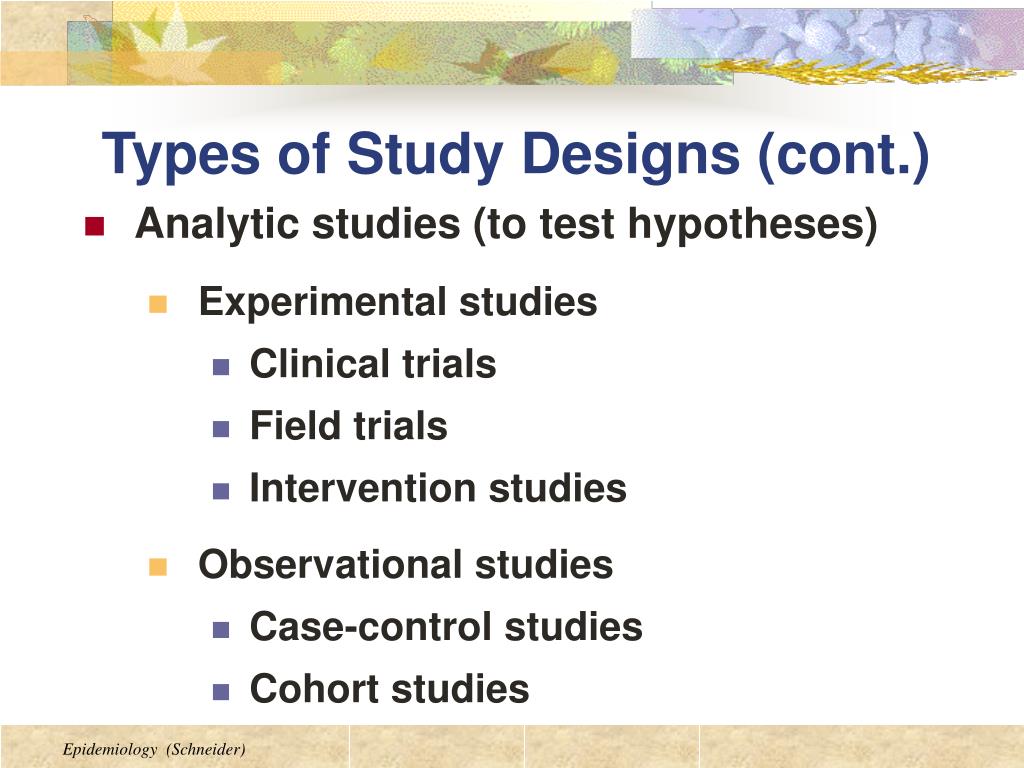Table Of Content

The researcher merely observes outcomes in different groups of participants who, for natural reasons, have or have not been exposed to a particular risk factor. Examples of observational studies include cross-sectional, case–control, and cohort studies. This blog introduces prospective and retrospective cohort studies, discussing the advantages, disadvantages and use of these type of study designs.
Design of a Randomized Control Trial (Fig. 8.
It is especially important to consider the education level of the survey population when thinking about how easy it will be for respondents to interpret and answer a question. Double negatives (e.g., do you favor or oppose not allowing gays and lesbians to legally marry) or unfamiliar abbreviations or jargon (e.g., ANWR instead of Arctic National Wildlife Refuge) can result in respondent confusion and should be avoided. The Center’s transition from conducting U.S. surveys by live telephone interviewing to an online panel (around 2014 to 2020) complicated some opinion trends, but not others. The Center adopted several strategies for coping with changes to data trends that may be related to this change in methodology. If there is evidence suggesting that a change in a trend stems from switching from phone to online measurement, Center reports flag that possibility for readers to try to head off confusion or erroneous conclusions. For Pew Research Center surveys, this involves thinking about what is happening in our nation and the world and what will be relevant to the public, policymakers and the media.
Longitudinal vs Transversal Studies
A good research design draws an outcome that can be applied to a large set of people and is not limited to sample size or the research group. Quasi-experimental research design is similar to experimental research design, but it lacks one or more of the features of a true experiment. This type of research design is used when it is not feasible or ethical to conduct a true experiment. An experiment in which participants receive one of two (or more) interventions and are then followed to determine the effects of the intervention. This compares a population with a certain medical condition with another group of people who do not have the disease but are otherwise similar to the study population.
Article Content
A descriptive study describes the desired characteristics of the population under investigation. It includes a single sample population without any comparison or control group. It helps in generalizing the findings from a ‘representative sample’ and extrapolating them to the population at large. Therefore, when choosing descriptive study designs for research, it is important that the sample must be representative of the population and the sample size must be adequate.
Cardiovascular outcomes trials: a paradigm shift in the current management of type 2 diabetes - Cardiovascular ... - Cardiovascular Diabetology
Cardiovascular outcomes trials: a paradigm shift in the current management of type 2 diabetes - Cardiovascular ....
Posted: Thu, 04 Aug 2022 07:00:00 GMT [source]
Types of Research Design – Elements, Needs and Characteristics
Some of the biases observed with cohort studies include selection bias and information bias. Some individuals who have the exposure may refuse to participate in the study or would be lost to follow‐up, and in those instances, it becomes difficult to interpret the association between an exposure and outcome. Also, if the information is inaccurate when past records are used to evaluate for exposure status, then again, the association between the exposure and outcome becomes difficult to interpret. In this article, which is the first part of a series on “study designs,” we provide an overview of research study designs and their classification. An example of a cross-sectional study design would be enrolling participants who are either current alcohol consumers or have never consumed alcohol, and are being assessed whether or not they have liver-related issues.
The one chart you need to understand any health study
It involves collecting data through surveys, questionnaires, interviews, and observations. The aim of descriptive research is to provide an accurate and detailed portrayal of a particular group, event, or situation. It can be useful in identifying patterns, trends, and relationships in the data. This is a study performed to avoid any bias while testing for the efficacy of, e.g., a drug. The study population is randomly divided into two groups, of which one receives the drug under study and the second group receives a placebo and acts as the control group.
Questionnaire design is a multistage process that requires attention to many details at once. Designing the questionnaire is complicated because surveys can ask about topics in varying degrees of detail, questions can be asked in different ways, and questions asked earlier in a survey may influence how people respond to later questions. Researchers are also often interested in measuring change over time and therefore must be attentive to how opinions or behaviors have been measured in prior surveys. Studies can control for many possible "confounding factors" — or variables that may influence a particular outcome —but it's impossible to account for everything that may matter. Their results match those found in the Iowa Women’s Health Study and the Norwegian County Study, but they did not fully align with other studies involving diabetics and healthy older people.
Research Design: Quantitative Studies
Lastly, in a longitudinal case design, a single case or multiple cases are studied over an extended period of time to understand how factors develop over time. Research study designs are of many types, each with its advantages and limitations. The type of study design used to answer a particular research question is determined by the nature of question, the goal of research, and the availability of resources.

Community trial
As an example, an ethnographer may study how different communities celebrate traditional festivals or how individuals from different generations interact with technology differently. This may involve a lengthy period of observation, combined with in-depth interviews to further explore specific areas of interest that emerge as a result of the observations that the researcher has made. Quasi-experimental research design is used when the research aims involve identifying causal relations, but one cannot (or doesn’t want to) randomly assign participants to different groups (for practical or ethical reasons). Instead, with a quasi-experimental research design, the researcher relies on existing groups or pre-existing conditions to form groups for comparison. There are some terms that are used frequently while classifying study designs which are described in the following sections.
"While prior attacks could misdirect a single branch or the first instance of a branch executed multiple times, we now have such precise control that we could misdirect the 732nd instance of a branch taken thousands of times,” said Tullsen. Another experiment embedded in a December 2008 Pew Research Center poll also resulted in a contrast effect. When people were asked “All in all, are you satisfied or dissatisfied with the way things are going in this country today? ” immediately after having been asked “Do you approve or disapprove of the way George W. Bush is handling his job as president?
This often results in smaller sample sizes, which can reduce the statistical power and generalisability of the results. In cross‐over clinical trial study design, there are two groups who undergoes the same intervention/experiment at different time periods of the study. That is, each group serves as a control while the other group is undergoing the intervention/experiment.14 Depending on the intervention/experiment, a ‘washout’ period is recommended. This would help eliminate residuals effects of the intervention/experiment when the experiment group transitions to be the control group. Hence, the outcomes of the intervention/experiment will need to be reversible as this type of study design would not be possible if the subject is undergoing a surgical procedure. Clinical trials are also known as therapeutic trials, which involve subjects with disease and are placed in different treatment groups.
Analytical study designs focus on finding causes and effects and quantifying associations between exposures and outcomes and finding evidence. Descriptive studies can only identify existing patterns among cases, within and across populations with respect to time and place. These studies provide a snapshot of the prevalence of a disease in a population at a given point of time. An example of cross sectional studies would be enrolling participants who are either current smokers or non-smokers and assessing whether or not they have respiratory disorders. Cross sectional studies are relatively less expensive and allow to assess multiple outcomes simultaneously. However, one can only assess the prevalence but not the incidence of a disease.
For example, looking at the incidence of lung cancer in smokers versus nonsmokers, or comparing the antenatal dietary habits of mothers with normal and low-birth babies. In these studies, the investigator did not play any role in determining the smoking or dietary habit in individuals. First, it is important to ask questions that are clear and specific and that each respondent will be able to answer.
This tutorial is designed to be read in the order going up the pyramid from the base, but you can jump around according to your needs and interests. There are questions to test yourself about each study type, some helpful formulas related to the study types, a video demonstrating how to find each type of study, and a glossary of relevant terms. For example, you could adopt a phenomenological design to study why cancer survivors have such varied perceptions of their lives after overcoming their disease. This could be achieved by interviewing survivors and then analysing the data using a qualitative analysis method such as thematic analysis to identify commonalities and differences.

No comments:
Post a Comment